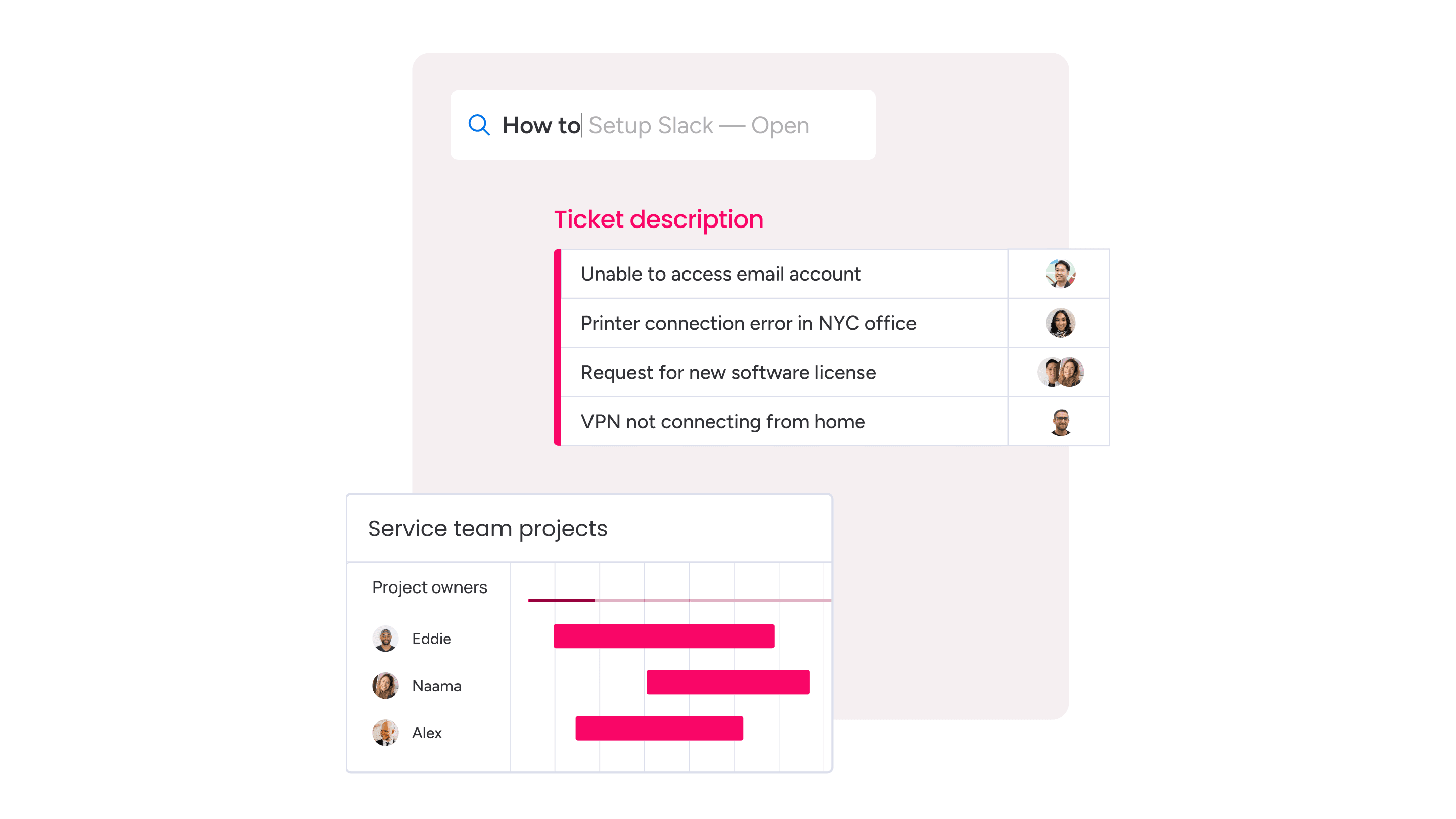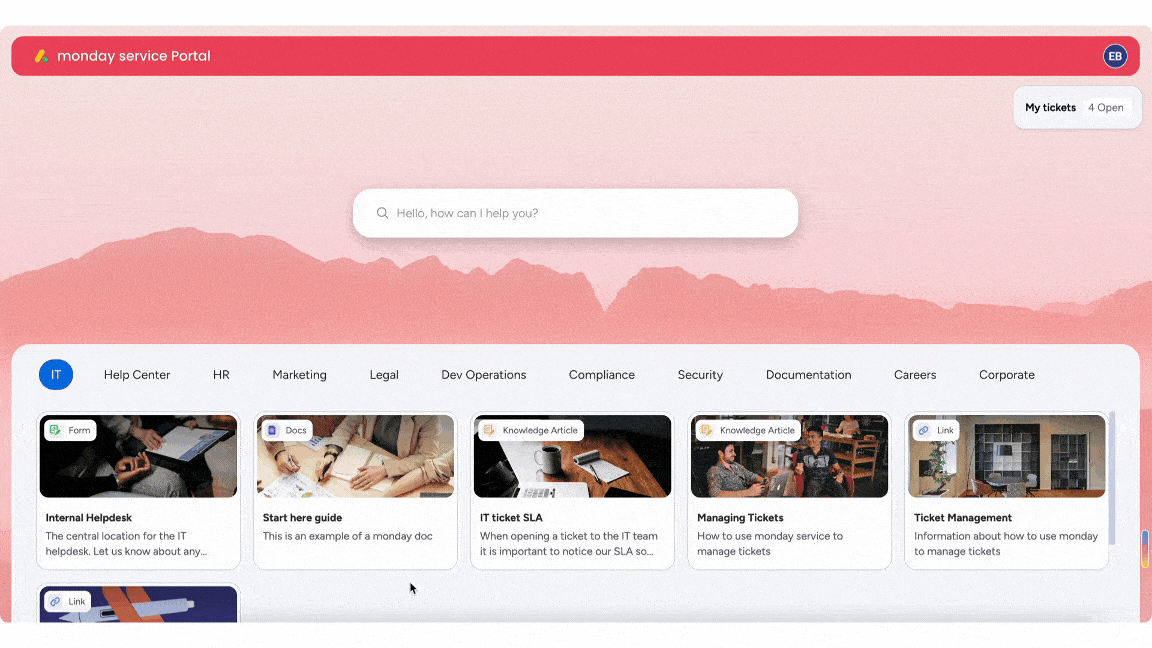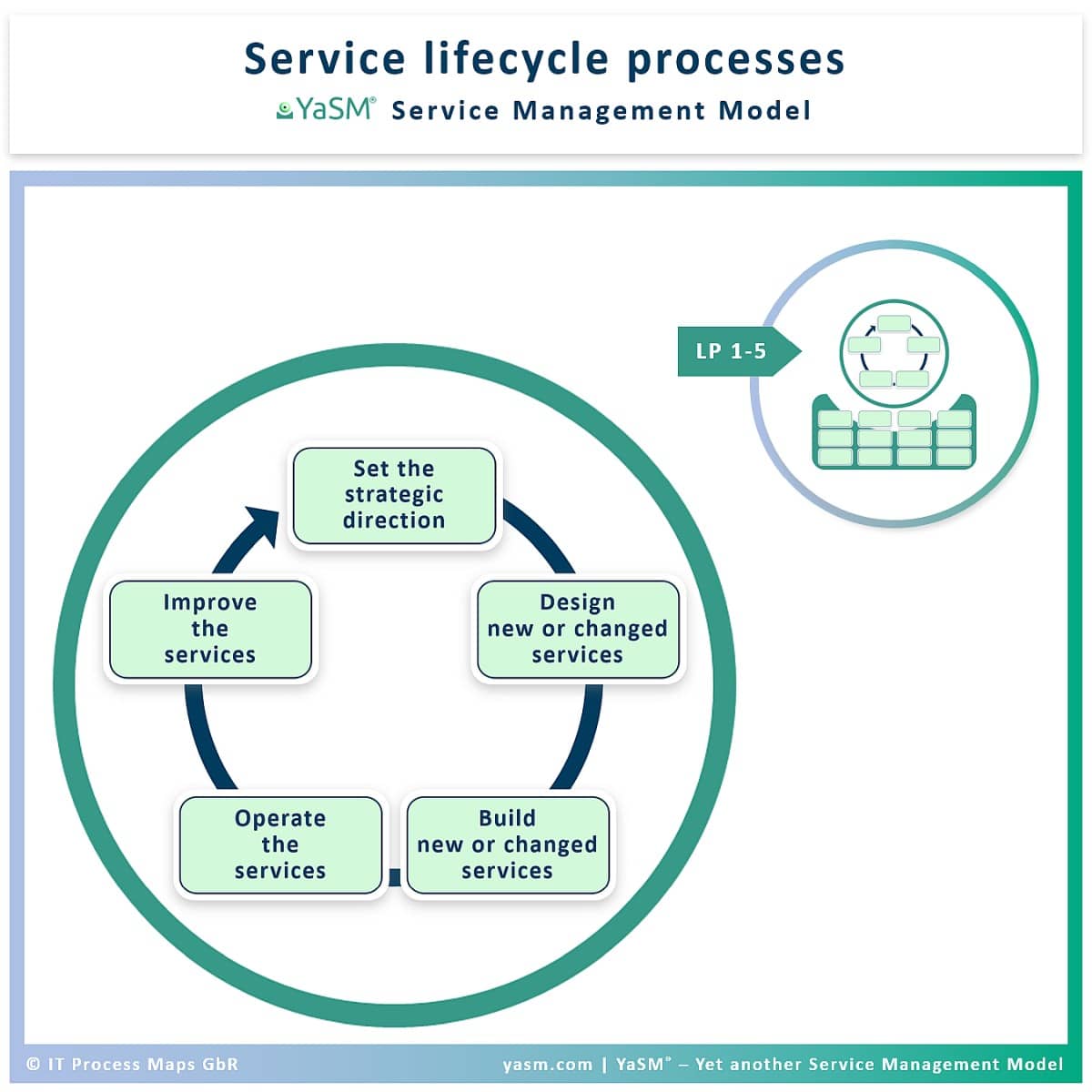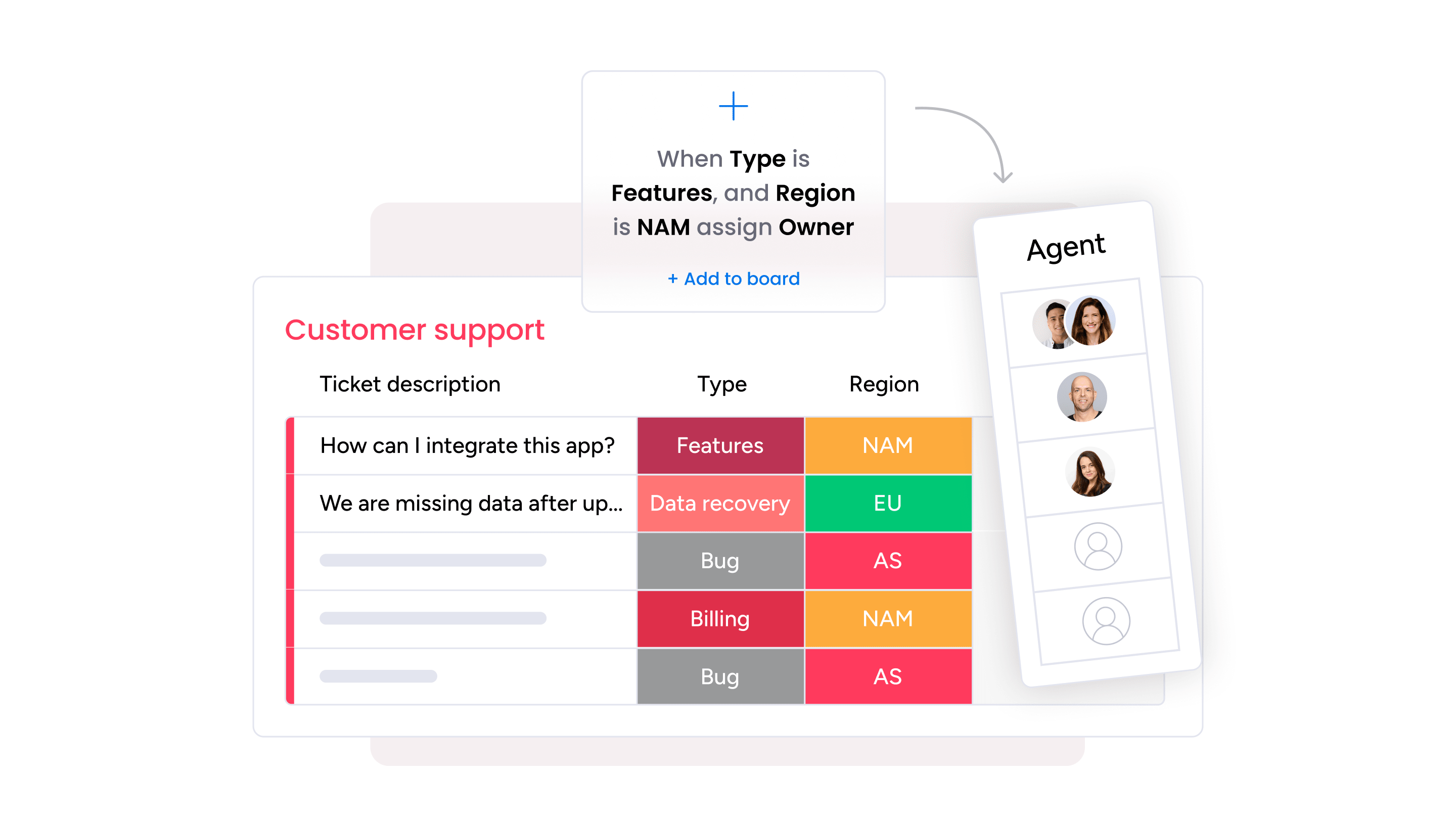Think of IT service delivery as the central nervous system of your business: it’s not just about reacting to pain points like a broken laptop or a password reset. It is the system that carries vital information and enables every part of the organization, from HR to finance, to function smoothly and work together.
This pragmatic guide breaks down the core components of effective service management. We will walk through what IT service delivery means in practice, why structured processes are critical for growth, and the five phases that take a service from an idea to an operational reality.
We will also cover the benefits of using software to gain visibility and drive efficiency across teams.
If there’s one thing you take from this post it’s that building a great service experience starts with understanding the core principles. When you have a clear framework and an intuitive platform to support it, you empower your teams to move beyond firefighting.
Key takeaways
- Service management transforms chaos into scalable processes: without structured service delivery, growing organizations face frustrated users and overwhelmed IT teams that can’t keep up with demand.
- Combining AI automation with intuitive design: smart routing, automated ticket resolution, and pre-built dashboards, offered by modern platforms like monday service, help teams resolve issues faster while keeping everyone aligned across departments.
- Centralized service management breaks down departmental silos: modern platforms provide single sources of truth that connect IT, HR, facilities, and other teams for better collaboration and visibility.
- The five-phase service lifecycle guides strategic delivery: from initial strategy through continuous improvement, structured phases ensure services align with business goals and evolve with organizational needs.
- Self-service IT automation empowers users while freeing up agents: automated password resets and standard request fulfillment let users get instant help while your team focuses on complex challenges.

What is IT service delivery?
IT service delivery is the process of providing technology services to users across your organization. This means everything from fixing password issues to maintaining critical business systems: all the activities that keep technology working for people who need it.
It is the engine that powers your organization’s technology experience. When someone needs help with their laptop, requests new software, or reports a system issue, IT service delivery is what makes the solution happen. In fact, an Ivanti research report shows that the average office worker will interact with the service desk three times per month.
What is a service?
A service is any technology capability your IT team provides to help users do their work. Services include things like email access, software installations, network connectivity, and technical support.
Each service follows a lifecycle — from the moment someone requests help to when their issue is resolved. This structured approach ensures nothing falls through the cracks.
IT support services
IT support services handle the day-to-day technology needs of your organization. Your IT team fixes broken hardware, troubleshoots software problems, and helps users navigate technical challenges.
These services form the backbone of most IT departments. They keep employees productive by solving problems quickly and preventing small issues from becoming major disruptions.
Customer services
Customer services focus on external users — the people who buy and use your products. This includes helping customers access their accounts, troubleshooting product issues, and ensuring they get value from what you offer.
Good customer service builds trust and loyalty. It turns frustrated users into satisfied customers who stick with your business.
Field services
Field services bring IT support directly to where it’s needed. Technicians travel to customer sites, remote offices, or other locations to install equipment, perform maintenance, or fix problems that can’t be solved remotely.
This hands-on approach is essential for hardware issues, network installations, and situations where remote support isn’t enough.
HR service management
HR service management applies IT service principles to human resources processes. This includes managing employee onboarding, benefits requests, policy questions, and other HR-related needs through structured workflows.
By treating HR requests like IT tickets, organizations create consistent experiences for employees while reducing administrative burden on HR teams.
Enterprise service management
Enterprise service management extends IT service practices across your entire organization. Finance, legal, marketing, and other departments use the same service delivery approach as IT.
This creates consistency across departments and helps different teams work together more effectively.
Service desk management
Service desk management coordinates all incoming service requests through a central point of contact. Your service desk acts as the front door for anyone who needs help, routing requests to the right teams and tracking progress.
A well-run service desk prevents requests from getting lost and ensures users always know where to turn for help. monday service provides the structure and automation needed to manage service desks efficiently, regardless of request volume.
Why is service management important?
Service management matters because chaos doesn’t scale! As organizations grow, informal support processes break down, leaving users frustrated and IT teams overwhelmed.
Higher customer satisfaction
When service delivery works well, users get help quickly and consistently. They know what to expect and trust that their issues will be resolved.
Happy users are productive users. They spend less time fighting technology and more time doing meaningful work.
Efficient, consistent processes
Structured service delivery creates predictable outcomes. Every request follows a clear path from submission to resolution.
This consistency reduces errors and ensures similar issues receive similar solutions, regardless of who handles them.
Scalability
Good service management grows with your organization. The same processes that work for 100 users can scale to support thousands with the right platform and automation in place.

Exploring the best qualities of good service management
Effective service management is defined by more than just responding to incidents; it requires a focused philosophy centered on value and evolution. Adopting these core qualities ensures that service delivery is consistently aligned with both user needs and broader business goals.
- Emphasis on the customer: every decision considers how it impacts the user experience.
- Continual improvement: regular reviews identify what’s working and what needs adjustment.
- Service lifecycle: clear phases guide services from planning through delivery and improvement.
5 phases of the service lifecycle
The service lifecycle provides a clear structure for delivering, managing, and continuously improving services. Each phase discussed below builds on the one before it, helping teams move from planning to daily operations with clarity and purpose. Here’s how the five phases work together.
Phase 1: service strategy
Service strategy starts with understanding what your organization needs. You identify which services to offer based on business goals and user requirements.
Phase 2: service design
Service design turns strategy into actionable plans. You create workflows, define roles, and establish the processes that will deliver each service.
Phase 3: service transition
Service transition moves new or changed services into production. This phase includes testing, training, and ensuring everything works as designed.
Phase 4: service operation
Service operation is where the real work happens. Your teams deliver services daily, handling requests and maintaining systems.
Key operational activities include incident management for unexpected issues, request fulfillment for standard needs, and problem management to prevent recurring incidents.
Phase 5: service improvement
Service improvement uses data and feedback to enhance service delivery. You analyze what happened, identify opportunities, and implement changes that make services more effective.

What are the benefits of using service management software?
Manual service management is only sustainable at a small scale. Once an organization is handling dozens of daily service requests, software becomes essential to maintain quality, efficiency, and scalability. The right platform transforms support from a reactive chore into a strategic, data-driven operation.
Here are the key benefits of implementing service management software:
- Centralizes information: service management software creates a single source of truth for all requests. Every ticket, update, and resolution lives in one accessible place, thanks to service ticket software, enhancing team collaboration and accountability.
- Provides insights to measure success: the software automatically tracks every aspect of service delivery, allowing you to see resolution times, frequent issues, and process bottlenecks. These insights drive strategic decisions regarding staffing, training, and improvements.
- Offers visibility & collaboration across departments: modern service platforms break down organizational silos. Real-time dashboards show workload and deadlines, helping IT, HR, and other teams stay aligned and coordinate effectively.
- Automates processes for enhanced efficiency: automation handles the repetitive work that slows teams down, such as ticket routing and status updates. This allows your team to focus on complex challenges while AI for ITSM handles routine requests. According to a report from Xurrent, AI-driven automation can be roughly 2× faster at resolving issues than manual methods.
The intuitive software for every service management solution: monday service
How organizations deliver IT service management is transformed by monday service, combining powerful automation with an interface anyone can use. Built on the robust monday Work OS, the platform connects service delivery with broader organizational workflows.
The system adapts to your needs rather than forcing you into rigid processes. Whether managing IT support, HR requests, or multi-department projects, monday service provides the flexibility to work your way.
Pre-built dashboards to visualize analytics
Understanding service performance shouldn’t require a data science degree. Pre-configured dashboards that show exactly what matters to your team are included with monday service.
Teams can track resolution times, monitor SLA compliance, and spot trends at a glance. Views can be customized for different audiences—from technical metrics for IT managers to business impact summaries for executives.
AI columns and automations to accelerate ticket resolution
AI service management transforms how tickets move through your system. It reads incoming requests, identifies urgency and type, then routes them to the right team instantly.
Smart routing means urgent issues get immediate attention while routine requests flow to appropriate queues. The AI learns from your team’s actions, getting smarter about categorization and assignment over time.
Streamlined communication across departments and stakeholders
Communication breaks down when teams use different systems. Everyone is kept on the same page by monday service with automated updates, in-context discussions, and clear ownership tracking. Stakeholders see exactly what they need without overwhelming detail. Technical teams get full context while executives see high-level progress.
Knowledge base assistance for agents
Agents need answers fast. The AI-powered knowledge base in monday service suggests relevant articles and solutions based on ticket content. Instead of searching through documentation, agents see helpful resources appear automatically. This speeds resolution and ensures consistent answers across your team.
Automations that empower self-service customer experiences
Many requests don’t need human intervention. Self-service automations let users reset passwords, request standard services, and check ticket status without waiting for an agent.
This frees your team to handle complex issues while users get instant help for routine needs.

Make service management a central part of your business strategy with monday service
Service management isn’t just an IT concern; it’s a business imperative. Organizations that excel at service delivery outperform their competitors in user satisfaction, operational efficiency, and adaptability.
Service delivery is connected to your broader business context by monday service. The platform allows you to link service tickets to projects, connect user requests to asset records, and see precisely how service performance impacts business outcomes.
This intelligent solutions also grows with you, scaling from small teams to enterprise deployments without losing the simplicity that makes it effective. Start with IT service delivery and expand to other departments as they recognize the benefits of structured service management.
Ready to transform how your organization delivers services? Try monday service now and experience the difference that intelligent automation and intuitive design can make.
Frequently asked questions
What are the service management frameworks?
Service management frameworks provide structured approaches to delivering IT services, with ITIL being the most widely adopted. Other frameworks include COBIT for governance, ISO/IEC 20000 for international standards, DevOps for development integration, and Lean Six Sigma for process optimization.
What is service management in ITIL?
Service management in ITIL focuses on aligning IT services with business needs through structured processes. ITIL provides best practices for incident management, change management, problem management, and service level management, which are essential ITSM processes to ensure consistent, high-quality service delivery.
What is service level management?
Service level management (SLM) is the process of defining, agreeing, and managing service performance standards between IT and business users. SLM creates service level agreements (SLAs) that specify response times, availability targets, and quality metrics that IT commits to deliver.
What's the difference between ESM and ITSM?
ITSM (IT Service Management) focuses specifically on technology services like help desk support and system maintenance. ESM (Enterprise Service Management) applies these same service principles across all business functions including HR, facilities, finance, and legal departments.
How do I implement IT service delivery in my organization?
Implementing IT service delivery starts with documenting your current processes and identifying gaps in service quality or efficiency. Choose a platform like monday service that supports your workflows, then pilot with a small team before expanding to full deployment with proper training and change management.
What metrics should I track for IT service delivery?
Key IT service delivery metrics include first contact resolution rate, mean time to resolution, ticket volume by category, SLA compliance percentage, and customer satisfaction scores. Track these consistently to identify trends and measure the impact of process improvements.
 Get started
Get started 

